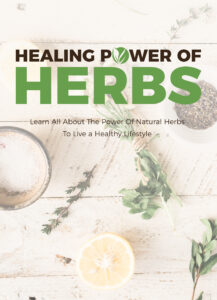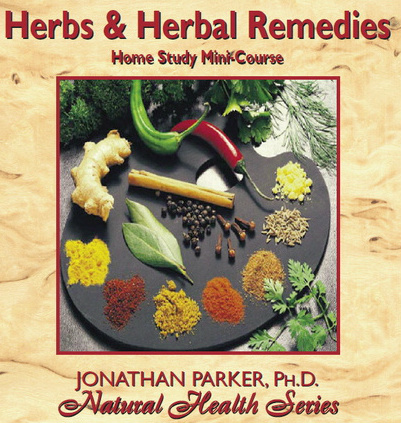How to Grow Your Own Healing Herbs at Home

Before diving in, please note: This post is for informational purposes only. If you’d like to know more about how we approach topics, feel free to check out our friendly Disclaimer Page.
Hey there, amazing readers! 🖐️ Just a quick note: yes, we know there are a lot of ads here. Trust us, we get it—it’s not the prettiest look, but they help us keep this blog alive and kicking. Those pesky little ads cover the costs of all the behind-the-scenes magic, from hosting and tech stuff to creating content we hope you’ll love.
We’re committed to delivering quality posts, and your support (even just sticking around despite the ads) means everything to us. So, bear with us, and thanks for helping us keep the good vibes rolling. Now, on to the fun stuff! 😉
TRANSLATE BUTTON AT THE END OF THE ARTICLE
A Quick Overview
Growing your own healing herbs at home is a rewarding journey that not only brings fresh flavors to your kitchen but also offers numerous health benefits.
Imagine stepping outside to snip off a few sprigs of basil or a handful of mint for your tea, knowing they’re packed with healing properties.
It’s simple, fulfilling, and can be done in even the smallest of spaces.
In this article, we’ll explore the steps to create your very own herb garden, from selecting the best herbs to harvesting and using them.
Discover the Benefits of Healing Herbs for Your Home
Healing herbs are more than just pretty plants; they are nature’s pharmacy!
Many herbs have anti-inflammatory, antibacterial, and calming properties.
For example, chamomile can help soothe anxiety, while peppermint is excellent for digestion.
Having a variety of herbs at home means you can turn to natural remedies for common ailments, reducing your reliance on over-the-counter medications.
Beyond their medicinal qualities, growing herbs can improve your mental well-being.
Tending to a garden is therapeutic.
The act of nurturing plants brings a sense of achievement and connection with nature.
Plus, the vibrant colors and delightful scents can elevate your mood.
Imagine walking into your home and being greeted by the fresh aroma of basil or rosemary.
Another added bonus?
Fresh herbs are far superior in taste and nutrition compared to the dried versions found in stores.
When you grow your own, you can harvest them at peak flavor, ensuring that every meal is bursting with freshness.
Who doesn’t want to take their cooking to the next level?
Lastly, growing your own herbs is a fantastic way to support sustainability.
By cultivating your herbs at home, you reduce your carbon footprint and avoid the packaging waste that comes with store-bought herbs.
It’s a win-win for you and the planet!
Choosing the Right Herbs for Your Healing Garden
Choosing herbs for your garden can feel overwhelming because there are so many options.
Start by considering your needs and preferences.
Are you looking for healing properties, cooking flavors, or maybe both?
Here are some popular choices:
Basil: Known for its anti-inflammatory properties and great in cooking.
Peppermint: Fantastic for digestion and refreshing tea.
Lavender: Excellent for relaxation and sleep.
Rosemary: Good for memory and great in a variety of dishes.
Thyme: Supports respiratory health and is delicious in soups.
When selecting herbs, think about your cooking habits as well.
If you love Italian food, basil and oregano should be on your list.
Discover the "Healing Power of Herbs" 🌿
If you enjoy herbal teas, consider chamomile and lemon balm.
Also, consider your growing environment—some herbs thrive better indoors, while others prefer outdoor gardens.
I remember when I started my herb garden, I went for the classic choices.
But as time went on, I realized I wanted to experiment with more unique flavors.
So, don’t be afraid to branch out!
Essential Tools for Growing Herbs at Home
Before you dive into planting, gather your tools.
Here are some essentials you’ll want on hand:
Containers: If you don’t have garden space, pots are a great alternative.
Ensure they have drainage holes.
Soil: Look for quality potting mix.
Herbs love well-draining soil.
Watering Can: An easy way to keep your plants hydrated.
Gardening Gloves: Protect your hands while working with soil.
Trowel: Handy for planting and digging.
Scissors or Shears: Perfect for snipping herbs during harvest.
Having the right tools can make the gardening process smoother and more enjoyable.
I’ve found that a good pair of scissors can be a lifesaver when I’m busy in the kitchen, needing to grab fresh herbs quickly.
Tips for Selecting the Perfect Planting Location
The location of your herb garden is crucial for success.
Here are some tips to find the right spot:
Sunlight: Most herbs love full sun, so look for a spot that gets at least 6 hours of sunlight daily.
Accessibility: Place your garden close to your kitchen for easy access when cooking.
Well-drained Area: Avoid areas where water tends to pool.
Herbs dislike soggy roots.
Wind Protection: If possible, choose a location sheltered from strong winds, which can damage delicate plants.
If you’re short on space, don’t fret!
Windowsills and balconies can also be great spots for growing herbs.
I have a friend who grows herbs in her kitchen window, and they thrive beautifully!
Seed vs. Seedling: Which is Best for You?
When it comes to starting your herb garden, you have two primary options: seeds or seedlings.
Each has its pros and cons.
Seeds: Starting from seeds is cost-effective and offers a wider variety of herbs.
However, it requires patience, as germination takes time.
Plus, you need to monitor them closely during the early stages.
Seedlings: Buying seedlings from a nursery is quicker and easier.
You’ll skip the germination phase and can harvest sooner.
The downside is that your options may be limited, and seedlings can be more expensive.
In my experience, starting with a few seedlings while also experimenting with seeds can strike the right balance.
You get the joy of nurturing seeds while enjoying the immediate reward of seedlings.
Soil Preparation: Creating the Ideal Herb Environment
Healthy soil is the backbone of a thriving herb garden.
Here’s how to prepare it:
Choose the Right Mix: Look for a well-draining potting mix, or you can create your own by mixing equal parts compost, peat, and perlite.
Enrich the Soil: Adding compost or organic matter enriches the soil, providing essential nutrients to your herbs.
Check pH Levels: Most herbs prefer a pH between 6.0 and 7.0.
You can test your soil with kits available at garden centers.
Aeration: For containers, ensure your soil is loose enough to allow roots to breathe.
I like to take a little extra time with my soil because I believe it really sets the tone for growth.
Just like a good recipe, a solid foundation makes all the difference!
Watering Wisely: Keeping Your Herbs Hydrated
Watering can make or break your herb garden.
Here’s how to do it right:
Discover the "Healing Power of Herbs" 🌿
Frequency: Generally, herbs need water once a week, but this depends on factors like weather and soil type.
Deep Watering: Water deeply to encourage roots to grow down.
A good soak allows moisture to reach deeper soil layers.
Avoid Overwatering: It’s better to let the soil dry out slightly between waterings.
Overly wet soil can lead to root rot.
Morning Routine: Watering in the morning helps prevent evaporation and fungal diseases.
I’ve learned that observing your plants is key.
If they look droopy, it might be time for a drink.
Just remember, herbs are more forgiving than other plants!
Sunlight Needs: How Much Light Do Your Herbs Need?
Most herbs thrive in bright, direct sunlight.
Here’s a breakdown of light requirements:
Full Sun: Basil, rosemary, and thyme thrive in full sun, needing about 6-8 hours of direct sunlight daily.
Partial Shade: Mint and parsley can tolerate some shade and do well with about 4-6 hours of light.
Indoor Options: If growing indoors, consider investing in grow lights to supplement natural light, especially during winter months.
You might be surprised how much your herbs can flourish with the right lighting.
I once had a batch of basil that seemed to grow overnight once I moved it to a sunnier spot!
Companion Planting: Boosting Growth with Friends
Companion planting is a nifty technique where certain plants help each other grow better.
Here are some beneficial combinations:
Basil and Tomatoes: Basil improves the flavor of tomatoes and wards off pests.
Mint and Cabbage: Mint can repel cabbage moths, protecting your cabbage plants.
Thyme and Rosemary: These two herbs can thrive together and complement each other in cooking.
Experimenting with companion planting can lead to a more fruitful garden.
I’ve noticed that my herbs grow stronger and more vibrant when they share space with their buddies!
Natural Pest Control: Protecting Your Herb Garden
Pests can be a nuisance, but there are natural ways to keep them at bay:
Introduce Beneficial Insects: Ladybugs and lacewings prey on aphids and are a gardener’s best friends.
Neem Oil: This natural pesticide is safe for most plants and can deter pests without harming beneficial insects.
Garlic Spray: A simple garlic, water, and soap mixture can deter many pests without chemical residues.
Rotate Crops: Changing the location of your herbs each season can help prevent pest infestations.
I once battled aphids on my mint and learned the hard way that prevention is key.
Since then, I’ve made it a point to incorporate beneficial insects into my garden plan!
Harvesting Your Herbs: When and How to Pick Them
Harvesting is the most exciting part!
Here’s how to do it:
Timing: Pick herbs in the morning when their oils are most potent.
Avoid harvesting during hot parts of the day.
Snipping Techniques: Use sharp scissors or shears to snip leaves just above a leaf node, encouraging bushier growth.
Don’t Over-Harvest: Take only a third of your plant at a time to ensure it continues to thrive.
I remember my first harvest of basil.
It felt like a mini celebration!
The first handful of leaves really made it feel like I was a true gardener.
Enjoying Your Healing Herbs: Recipes and Remedies
Now that you’ve grown your herbs, how do you use them?
Here are some fun ideas:
Herbal Teas: Brew fresh mint or chamomile for a soothing drink.
Pesto: Blend basil, garlic, nuts, and olive oil for a delicious sauce.
Salads: Toss fresh parsley or cilantro into salads for a burst of flavor.
Infused Oils: Combine herbs with olive oil for a delightful drizzle over dishes.
I love to experiment with new recipes.
My favorite is a simple lemon-herb chicken, where fresh thyme and rosemary make all the difference.
Conclusion
Growing your own healing herbs at home is a journey filled with joy, flavor, and health benefits.
From selecting the right herbs to nurturing and harvesting them, each step enhances your connection to nature and your kitchen.
So grab your pots and soil, and let’s get growing!
Your herb garden is waiting, and it’s going to be fantastic.
Happy gardening!

The Enlightenment Journey is a remarkable collection of writings authored by a distinguished group of experts in the fields of spirituality, new age, and esoteric knowledge.
This anthology features a diverse assembly of well-experienced authors who bring their profound insights and credible perspectives to the forefront.
Each contributor possesses a wealth of knowledge and wisdom, making them authorities in their respective domains.
Together, they offer readers a transformative journey into the realms of spiritual growth, self-discovery, and esoteric enlightenment.
The Enlightenment Journey is a testament to the collective expertise of these luminaries, providing readers with a rich tapestry of ideas and information to illuminate their spiritual path.
Our Diverse Expertise 🌟
While our primary focus is on spirituality and esotericism, we are equally passionate about exploring a wide range of other topics and niches 🌍📚. Our experienced team is dedicated to delivering high-quality, informative content across various subjects ✨.
To ensure we provide the most accurate and valuable insights, we collaborate with trusted experts in their respective domains 🧑🏫👩🏫. This allows us to offer well-rounded perspectives and knowledge to our readers.
Our blog originally focused on spirituality and metaphysics, but we’ve since expanded to cover a wide range of niches. Don’t worry—we continue to publish a lot of articles on spirituality! Frequently visit our blog to explore our diverse content and stay tuned for more insightful reads.
Discover the "Healing Power of Herbs" 🌿
Unlock the ancient wisdom of herbal remedies with this comprehensive guide! Perfect for beginners and enthusiasts alike, this e-book dives into the powerful benefits of herbs for health, wellness, and natural healing.
Inside, you’ll find:
Easy-to-follow recipes for teas, tinctures, and remedies.
A guide to the most effective herbs for common ailments.
Tips on growing and storing your own herbs.
Transform your health naturally and embrace the healing power of nature. 🌱 Start your journey today!







